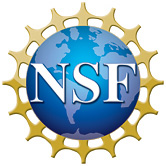About IPSE
The UW IPSE program is at the cutting-edge of museum-university collaborations and was one of five to receive funding from the National Science Foundation in fall of 2001. The structure of the program emphasizes professional development in the area of science communication and highly interdisciplinary interactions. Interns come from varied backgrounds, including chemistry, physics, biomedical engineering, chemical engineering, food science, psychology, computer science, journalism, and the history of science.
The UW IPSE program began focusing on museum exhibit development in the fall of 2004. Interns have worked closely with Discovery World Museum and the Nanoscale Informal Science Education (NISE) Network to create innnovative museum exhibits on nanotechnology and are involved in the process from the initial concept through building and assessment.
The goals of the IPSE program are to:
- Educate the public and student populations about nanoscale technology through hands-on, interactive activities.
- Provide future leaders with the tools to present scientific knowledge to diverse audiences.
- Foster imagination, interest, and enthusiasm in science, technology, engineering, and entreprenuership, especially as it relates to advanced and nanoscale materials.
- Provide a deeper understanding of scientific practices and the connections among scientists, engineers, and society.
At the start of the program in 2001, IPSE focused on science curriculum development and education outreach. To learn more about earlier IPSE activities and to access the IPSE teacher resources, click here.



